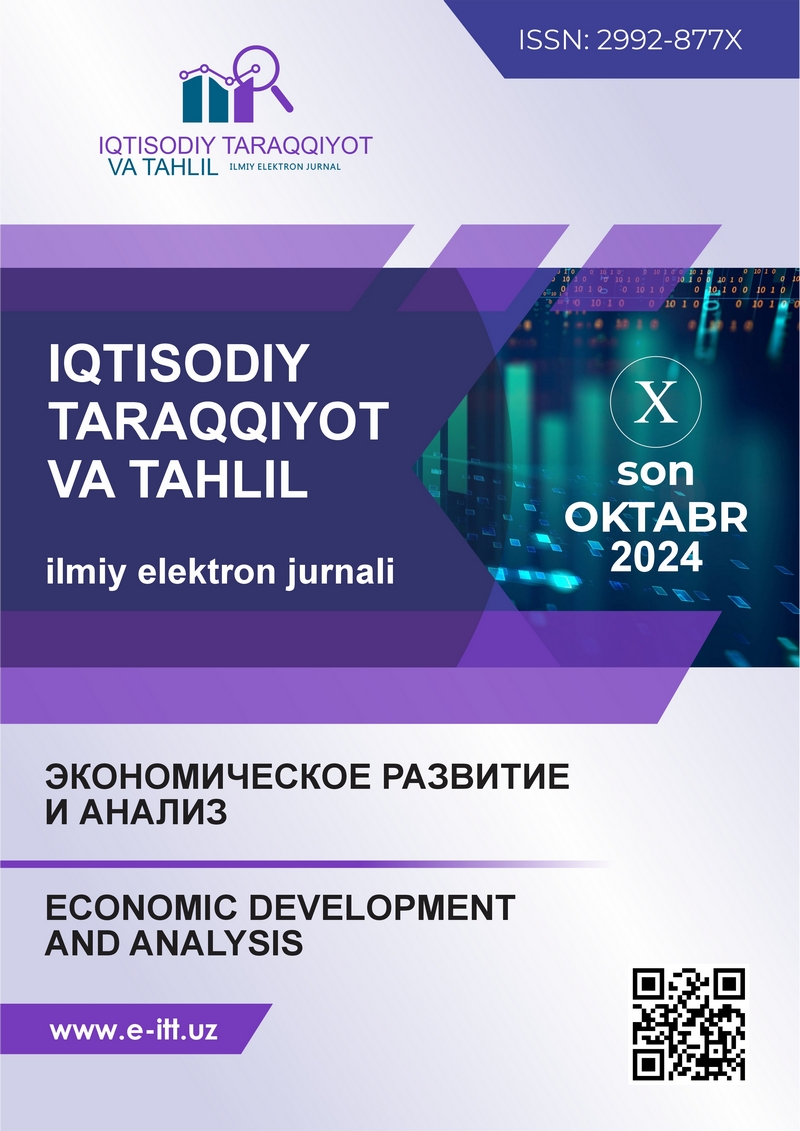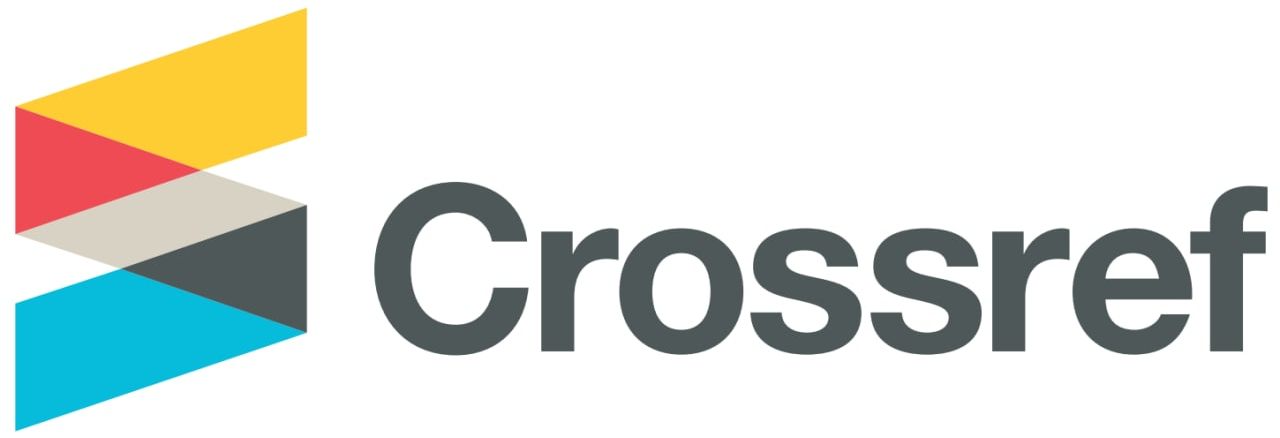ГОСУДАРСТВЕННОЕ РЕГУЛИРОВАНИЕ ПРИВЛЕЧЕНИЯ ПРЯМЫХ ИНОСТРАННЫХ ИНВЕСТИЦИЙ
DOI:
https://doi.org/10.60078/2992-877X-2024-vol2-iss10-pp466-475Аннотация
В этом исследовании рассматривается государственное регулирование прямых иностранных инвестиций в Узбекистане, подчеркивая его региональные особенности и взаимодействие между национальной и местной политикой. В нем рассматривается, как концентрация ПИИ в таких регионах, как Ташкент, Навои и Ферганская долина, контрастирует с недоинвестированием в таких областях, как Каракалпакстан и Сурхандарья. Рекомендации по улучшению согласования политики и улучшению инвестиционных условий предоставляются для содействия сбалансированному экономическому развитию по всей стране.
Ключевые слова:
прямые иностранные инвестиции государственное регулирование региональные характеристики экономическое развитие инвестиционная политика инфраструктура привлечение инвестиций согласование политики региональные различияБиблиографические ссылки
Ali-Nakyea, A., & Amoh, J. (2018). Have the generous tax incentives in the natural resource sector been commensurate with FDI flows? A critical analysis from an emerging economy. International Journal of Critical Accounting, 10, 257-273. https://doi.org/10.1504/IJCA.2018.10014042.
Anwar, A., Iwasaki, I., & Dornberger, U. (2021). Investment Motives in Africa: What Does the Meta-Analytic Review Tell?. Journal of African Economies. https://doi.org/10.1093/jae/ejab011.
Athukorala, P. (2014). Intra-regional FDI and Economic Integration in South Asia. South Asia Economic Journal, 15, 1 - 35. https://doi.org/10.1177/1391561414525710.
Chidlow, A., Salciuviene, L., & Young, S. (2009). Regional Determinants of Inward FDI Distribution in Poland. International Business Review, 18, 119-133. https://doi.org/10.1016/J.IBUSREV.2009.02.004.
Coffie, E., Alcalde-Fradejas, N., & Ramírez-Alesón, M. (2023). Pros and Cons of Ghana as a Destination for Foreign Direct Investment. Ghana Journal of Development Studies. https://doi.org/10.4314/gjds.v20i1.8.
Das, S., & Pant, M. (2006). Incentives for Attracting FDI in South Asia. International Studies, 43, 1 - 32. https://doi.org/10.1177/002088170504300101.
Dollar, D., Hallward-Driemeier, M., & Mengistae, T. (2005). Investment Climate and Firm Performance in Developing Economies. Economic Development and Cultural Change, 54, 1 - 31. https://doi.org/10.1086/431262.
Hallward-Driemeier, M., Wallsten, S., & Xu, L. (2006). Ownership, Investment Climate and Firm Performance: Evidence from Chinese Firms. Banking & Financial Institutions. https://doi.org/10.1111/j.1468-0351.2006.00267.x.
Hassel, A., & Luetz, S. (2012). Balancing Competition and Cooperation: The State’s New Power in Crisis Management. ERN: Regulation (IO) (Topic). https://doi.org/10.2139/SSRN.2103105.
Henderson, B., & Hughes, K. (2010). Valuation implications of regulatory climate for utilities facing future environmental costs. Advances in Accounting, 26, 13-24. https://doi.org/10.1016/J.ADIAC.2010.02.005.
Howell, C. (2020). Rethinking the Role of the State in Employment Relations for a Neoliberal Era. ILR Review, 74, 739 - 772. https://doi.org/10.1177/0019793920904663.
Hsu, M., Lee, J., León-González, R., & Zhao, a. (2018). Tax incentives and foreign direct investment in China. Applied Economics Letters, 26, 777 - 780. https://doi.org/10.1080/13504851.2018.1495817.
Kim, H., & Ku, K. (2010). A Comparative Study on Japan's Outward FDI to Korea and China. International Area Studies Review, 13, 103 - 81. https://doi.org/10.1177/223386591001300205.
Krueger, P., Sautner, Z., & Starks, L. (2020). The Importance of Climate Risks for Institutional Investors. Review of Financial Studies. https://doi.org/10.1093/RFS/HHZ137.
Lee, C. (2011). The influence on developing countries' foreign direct investment (FDI) policies imposed by incentives: A game analysis. African Journal of Business Management, 5. https://doi.org/10.5897/AJBM11.2035.
Lim, S. (2005). Foreign investment impact and incentive: a strategic approach to the relationship between the objectives of foreign investment policy and their promotion. International Business Review, 14, 61-76. https://doi.org/10.1016/J.IBUSREV.2004.12.004.
Lobao, L., Martin, R., & Rodríguez‐Pose, A. (2009). Editorial: Rescaling the state: new modes of institutional–territorial organization. Cambridge Journal of Regions, Economy and Society, 2, 3-12. https://doi.org/10.1093/CJRES/RSP001.
Majone, G. (1998). The Regulatory State And Its Legitimacy Problems. https://doi.org/10.1080/01402389908425284.
Metaxas, T., & Kechagia, P. (2016). FDI in Central Asia: the case of Uzbekistan. Applied Econometrics and International Development, 16, 63-76.
Mills, R., & Fan, Q. (2006). The Investment Climate in Post-Conflict Situations. Macroeconomics eJournal. https://doi.org/10.1596/1813-9450-4055.
Nasritdinova, G. (2018). FDI Scenario in Uzbekistan: Current Reforms and Future Prospects. International Journal of Management Science and Business Administration, 4, 38-42. https://doi.org/10.18775/ijmsba.1849-5664-5419.2014.44.1004.
Okafor, G., Piesse, J., & Webster, A. (2015). The motives for inward FDI into Sub-Saharan African countries. Journal of Policy Modeling, 37, 875-890. https://doi.org/10.1016/J.JPOLMOD.2015.07.003.
Park, B., & Roh, T. (2019). Chinese multinationals’ FDI motivations: suggestion for a new theory. International Journal of Emerging Markets. https://doi.org/10.1108/IJOEM-03-2017-0104.
Raff, H., & Srinivasan, K. (1998). Tax incentives for import-substituting foreign investment:: Does signaling play a role?. Journal of Public Economics, 67, 167-193. https://doi.org/10.1016/S0047-2727(97)00055-8.
Reiny IRIANA & Fredrik SJÖHOLM, 2002. "Indonesia'S Economic Crisis: Contagion And Fundamentals," The Developing Economies, Institute of Developing Economies, vol. 40(2), pages 135-151, June.
Stewart, J. (1993). Rational choice theory, public policy and the liberal state. Policy Sciences, 26, 317-330. https://doi.org/10.1007/BF00999475.
Streeck, W., & Schmitter, P. (1988). Private interest government: beyond market and state. American Political Science Review, 82, 355 - 356. https://doi.org/10.2307/1958142.
Streeten, P. (1993). Markets and states: Against minimalism. World Development, 21, 1281-1298. https://doi.org/10.1016/0305-750X(93)90043-9.
Wadhwa, K., & Reddy, S. (2011). Foreign Direct Investment into Developing Asian Countries: The Role of Market Seeking, Resource Seeking and Efficiency Seeking Factors. International Journal of Biometrics, 6. https://doi.org/10.5539/IJBM.V6N11P219.
Yu, C., Chang, T., & Fan, C. (2007). FDI timing: Entry cost subsidy versus tax rate reduction. Economic Modelling, 24, 262-271. https://doi.org/10.1016/J.ECONMOD.2006.07.004.
Zheng, Y. (2020). How FDI attracted? A Configurational Analysis for Regional Competitiveness in Mechanism of FDI Entry and Exit: Evidence from China. https://doi.org/10.21203/rs.3.rs-74788/v1.
Загрузки
Опубликован
Как цитировать
Выпуск
Раздел
Лицензия

Это произведение доступно по лицензии Creative Commons «Attribution» («Атрибуция») 4.0 Всемирная.










